The Marches, every village a theatre, every hill a dialect.
Luca Paolorossi
The Marches is a region in central Italy. It stretches from the Sibillini mountains to the Adriatic coast. The territory is mainly hilly and there are many villages on these hills.
The Marches has been called the region of theatres due to the presence of more than 70 historical theatres. The Marches has art in its DNA: from the cathedral of San Ciriaco overlooking the harbour to the Palazzo Ducale in Urbino, from the historic centre of Offida to Leopardi’s house, from the archaeological park of Urbs Salvia to the paper museum in Fabriano.
Nature also plays an important role. From the peaks of the Sibillini mountains, through Lake Pilato, home to small red crustaceans, the Lame Rosse canyon and the Frasassi caves to the Adriatic coast interrupted by the striking promontory of Monte Conero, The Marches is a region to explore for lovers of both nature and culture.
There is something magical and indefinite about the Marches. When you get close to one of its towns, you find yourself always and only having to deal with the light that invests and lifts the towns.
Carlo Bo
Ancona, also known as the “Doric city” because of its Greek origins, stands on the slopes of the promontory of Monte Conero. Its elbow shape allows you to see the sun rise and set over the sea. The Mole Vanvitelliana is one of the most important symbols, originally built as a lazaret, today it houses the tactile museum Omero. From the war memorial you can walk down to the Passetto beach. Don’t miss the Portonovo bay and the cathedral dedicated to San Ciriaco.
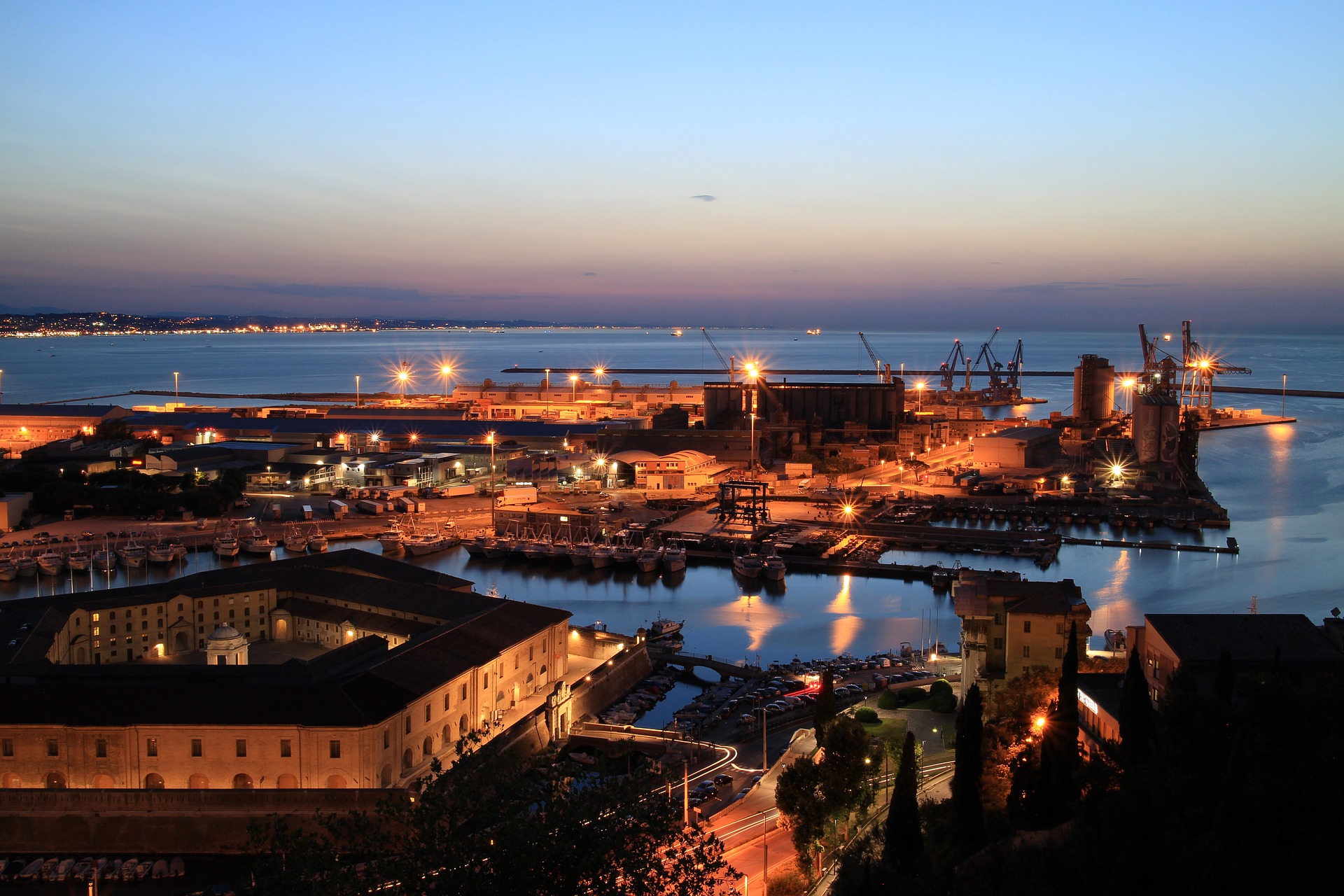
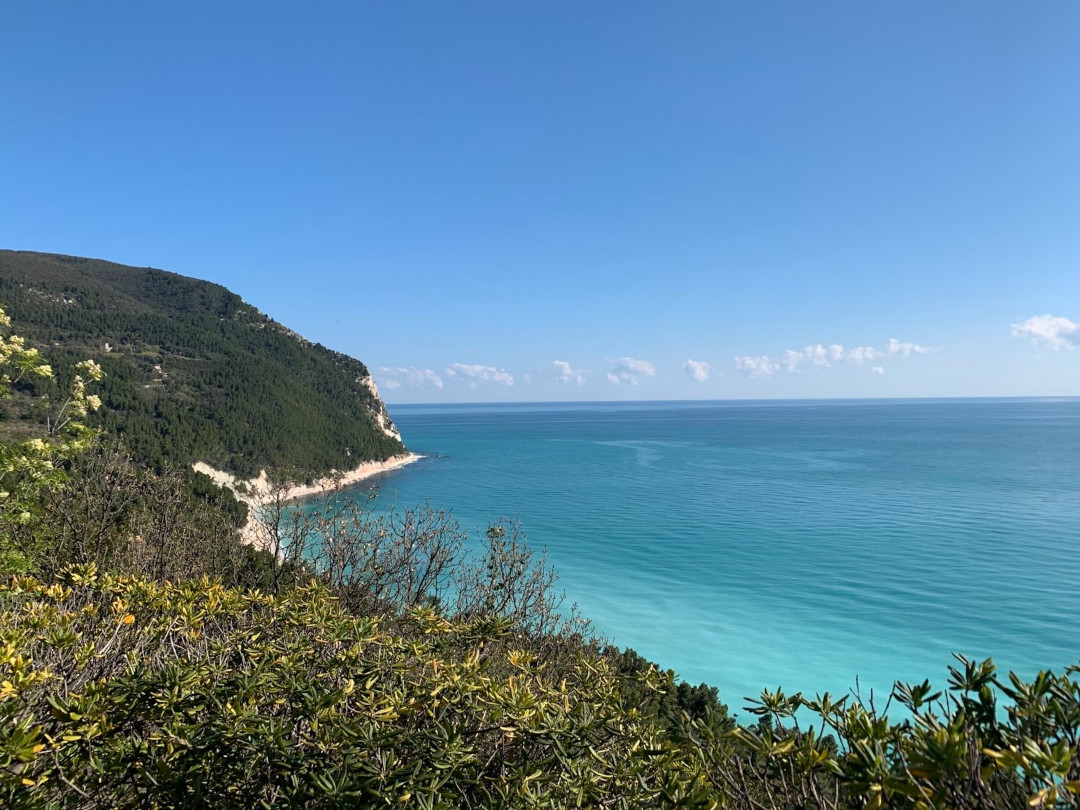
The historic centre of Sirolo, also known as “the castle”, with its typical alleyways, overlooks the sea. The famous Due Sorelle beach, so called because of the two stacks that look the same when seen from a particular perspective.
Continuing along the Riviera del Conero we arrive in Numana. After seeing the remains of the arch of the Roman tower above the marina, you can take the typical Costarella steps to reach the seafront at Marcelli.
Loreto is one of the most important Marian pilgrimage destinations due to the presence in its basilica of what is, according to the Catholic faith, the holy house of Nazareth where the Virgin Mary received the annunciation and Jesus lived. The basilica can be reached by climbing the 400 steps of the holy staircase.
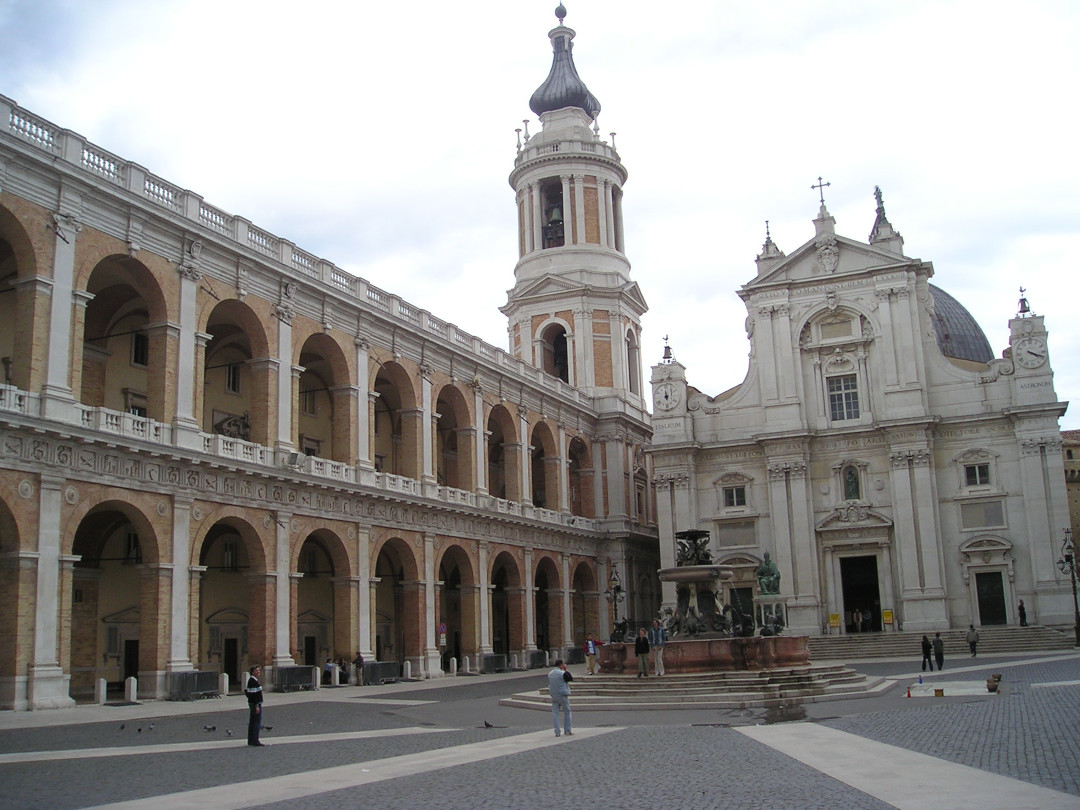
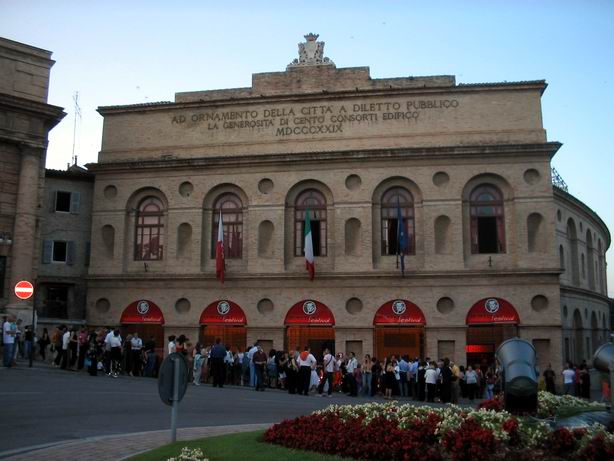
Macerata is famous for its Sferisterio, a semicircular open-air theatre known for its summer opera season and Musicultura. The Buonaccorsi Palace houses the Carriage Collection, the Ancient Art Collection and the Modern and Contemporary Art Collection. Its university was founded in 1290, one of the oldest in the world.
The Frasassi Caves are underground karst caves located in Genga. Discovered in 1971 and visited by millions of tourists, they are famous for their stalactites and stalagmites that will leave you speechless.
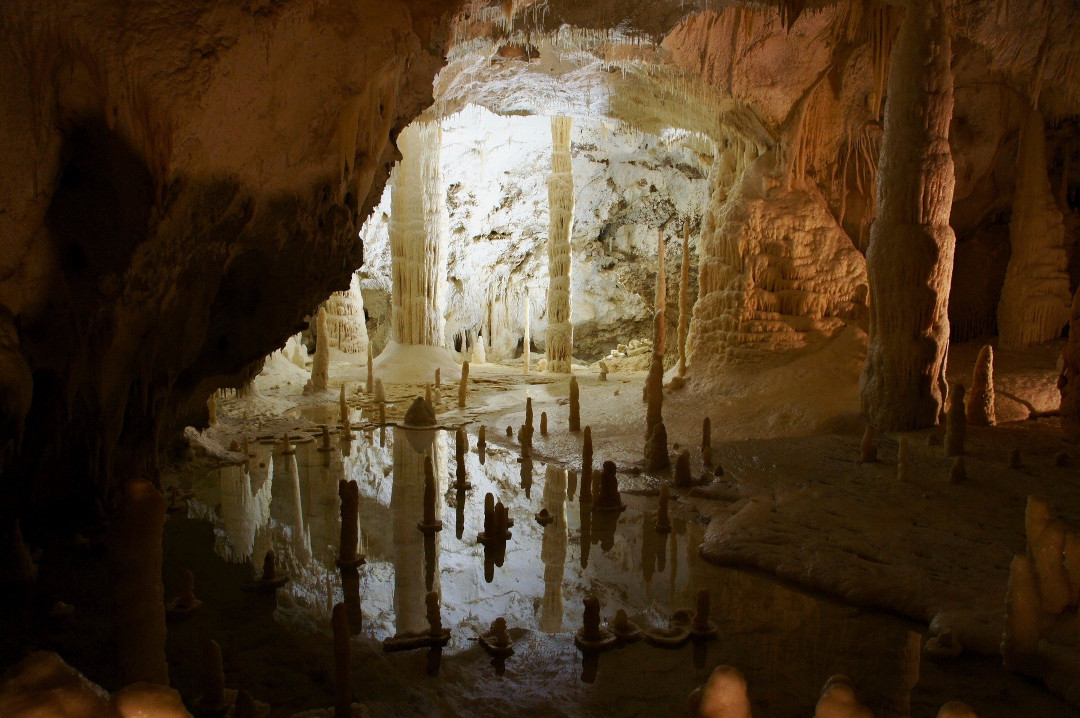
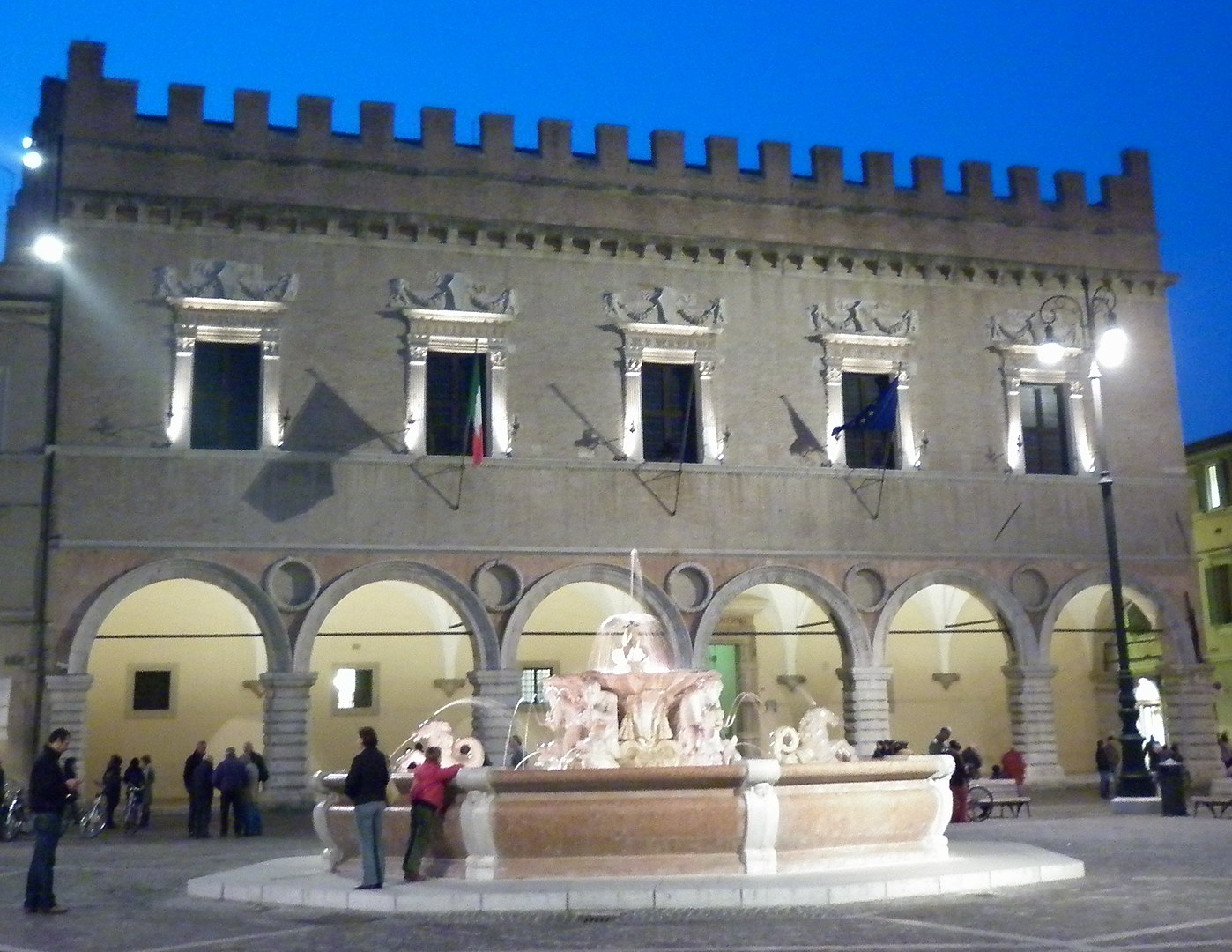
Pesaro is the birthplace of composer Gioachini Rossini. In 2017 it was awarded UNESCO recognition as a Creative City for Music. To the north there is the Monte San Bartolo nature park, from whose cliffs it is possible to admire a beautiful panorama from the hinterland to the north coast towards Romagna.
Senigallia is home to the imposing Renaissance-style fortress and the famous Rotonda a Mare. The city comes alive with the Summer Jamboree, an international festival of music from the 40s and 50s.
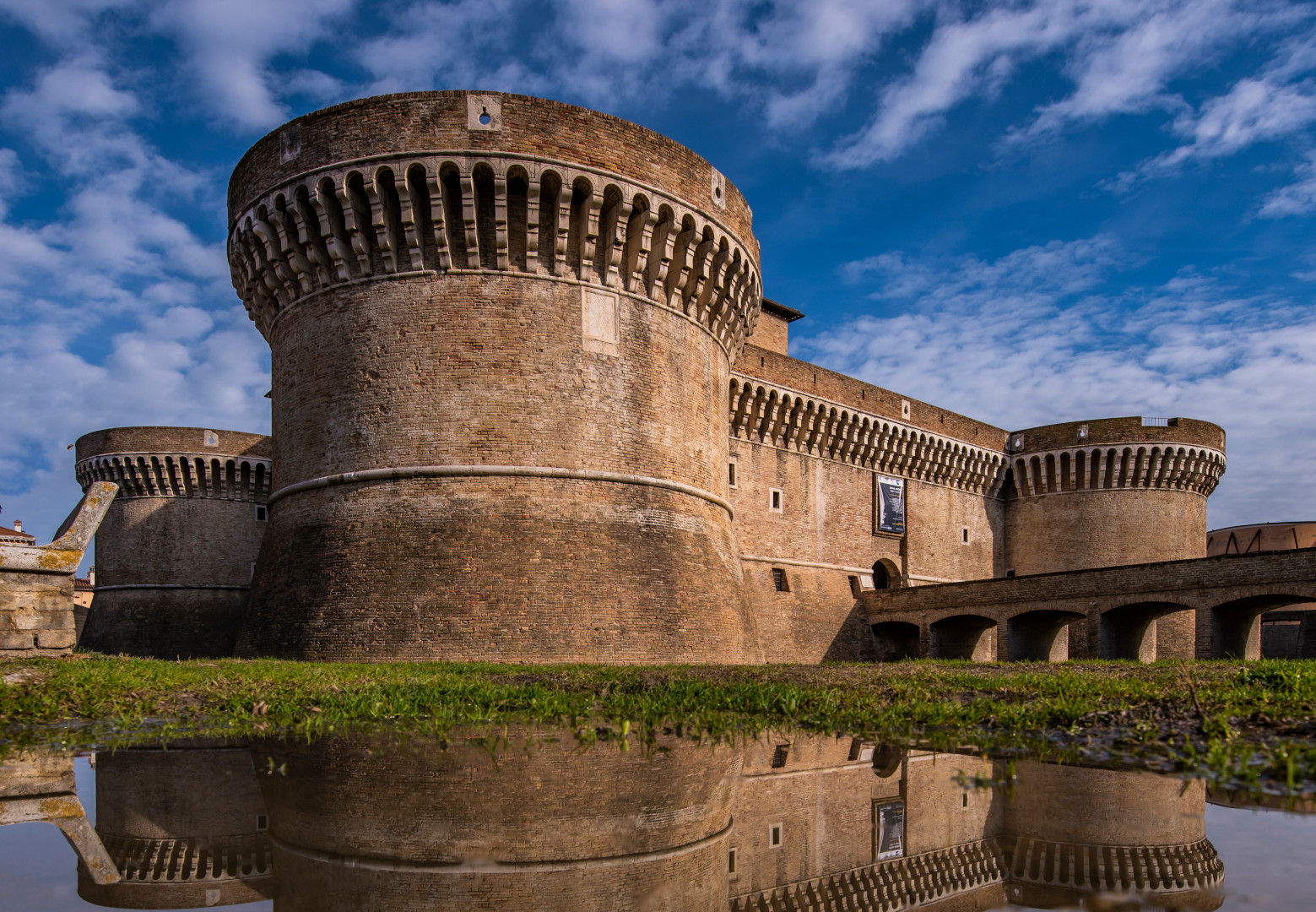
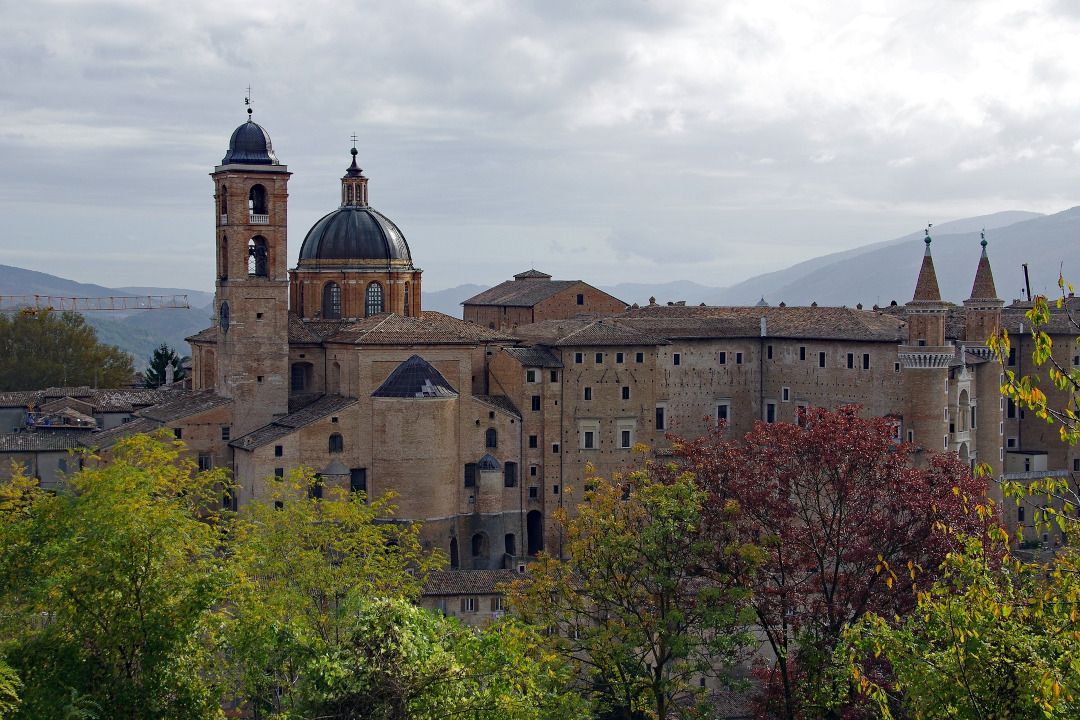
The historic centre of Urbino is a UNESCO World Heritage Site. It was one of the most important centres of the Italian Renaissance, whose architectural legacy it preserves. There is the birthplace of Raphael, where you can admire a painting by the young painter.
Recanati is the birthplace of the poet Giacomo Leopardi and a visit to the town offers a view of the famous Colle dell’Infinito (Hill of Infinity). In addition to the poet’s house, you can see the small square of “Il sabato del villaggio” and Silvia’s house.
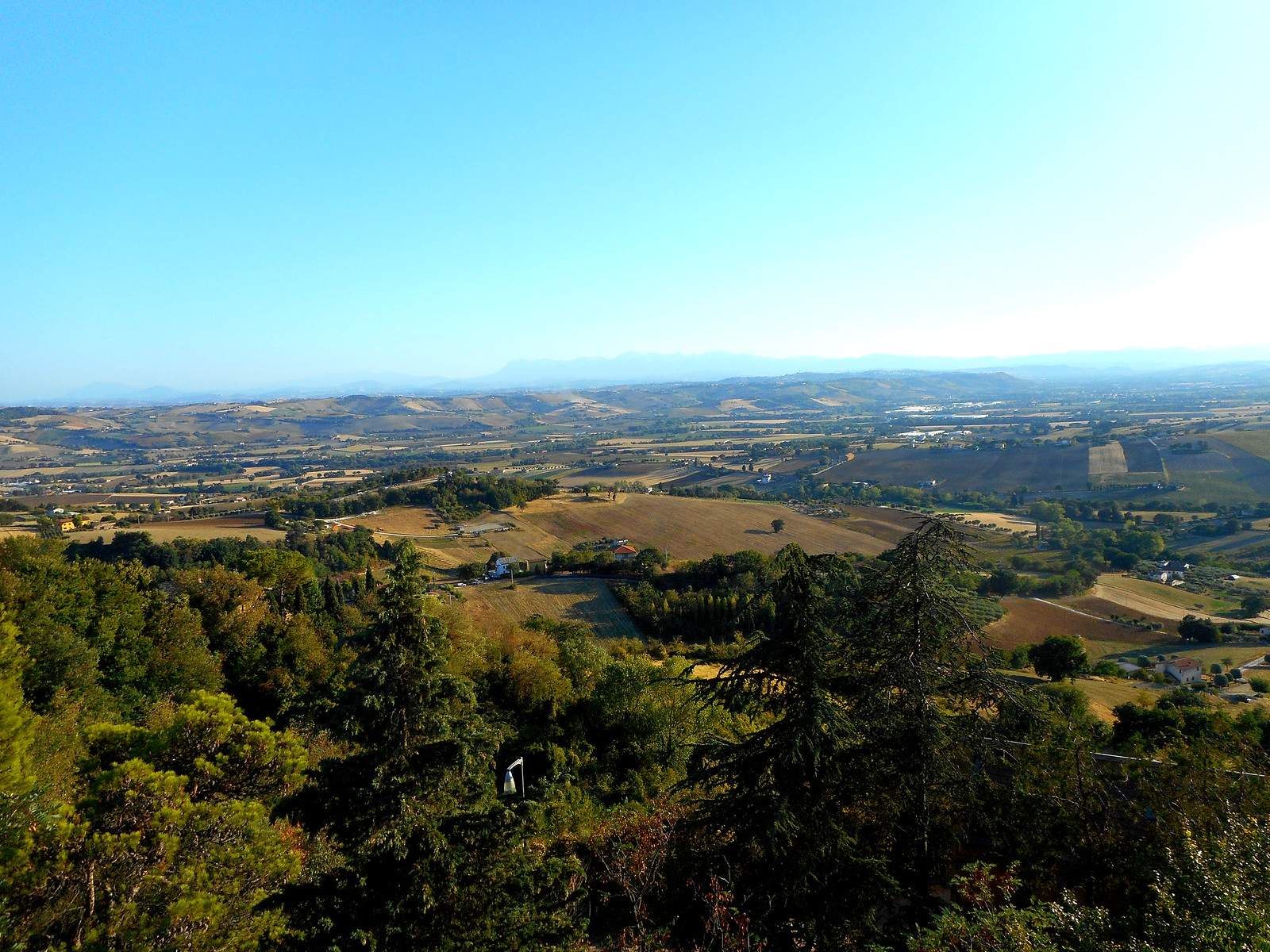
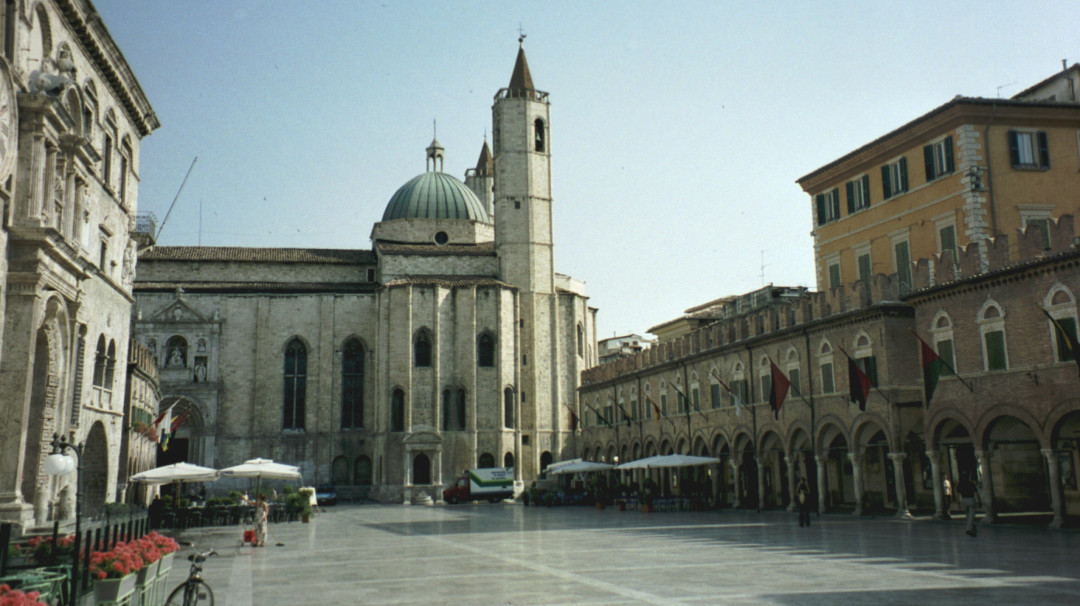
Passing through Ascoli Piceno, it is impossible not to taste the original olive all’ascolana, which takes its name from this city. The Renaissance Piazza del Popolo has been compared by G. Piovene to Piazza San Marco in Venice. In July and August, the Quintana joust is held, a historical commemoration of medieval origin with an equestrian joust.
Every 15 August in Fermo, the Cavalcata dell’Assunta is held, the oldest historical commemoration in Italy. The historic centre has retained its medieval appearance. There are also Roman cisterns with a surface area of around 2000 m² that can be visited, as well as the Aquila Theatre, one of the most imposing 18th-century theatres in the Marche region and central Italy.
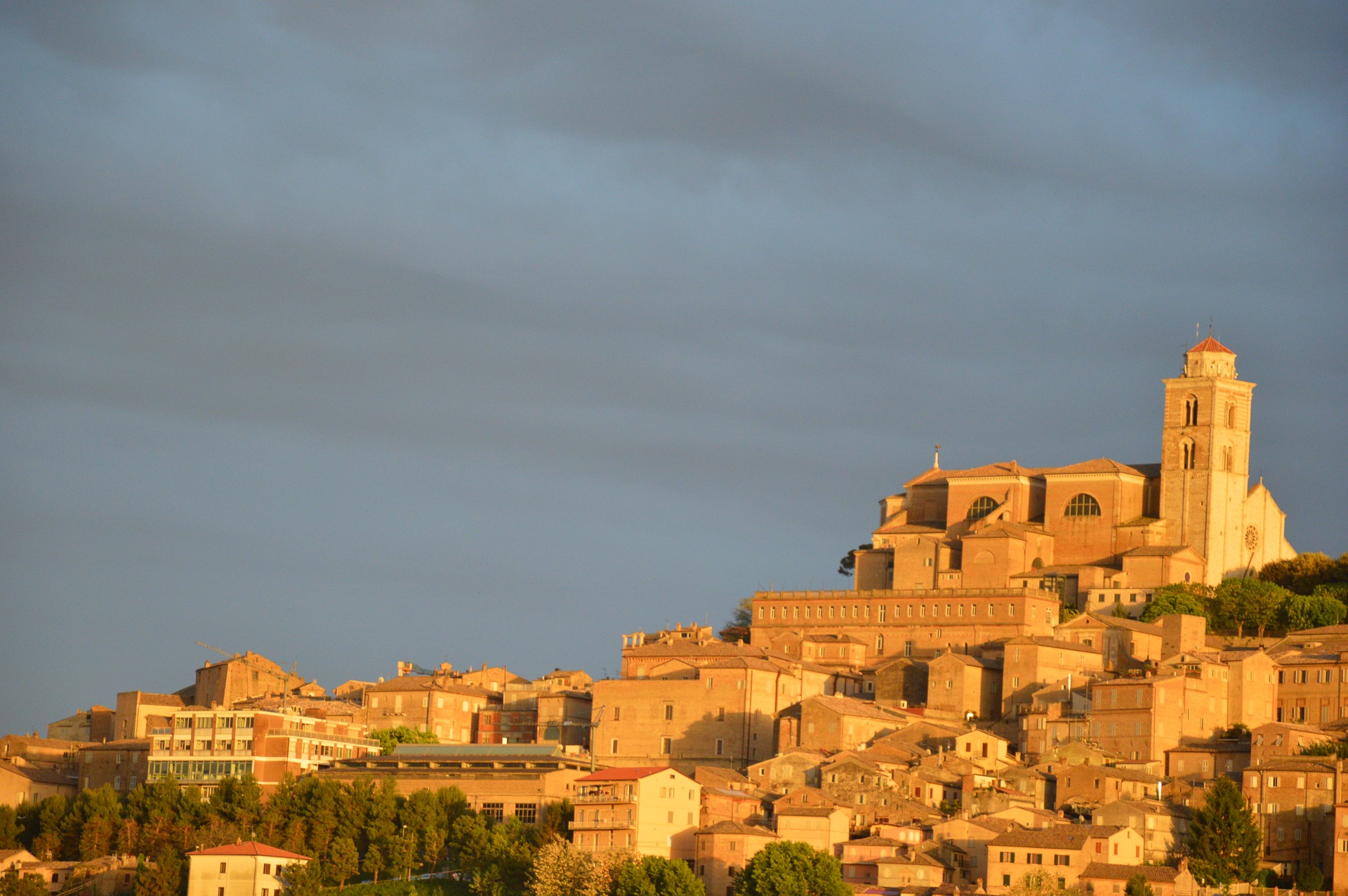
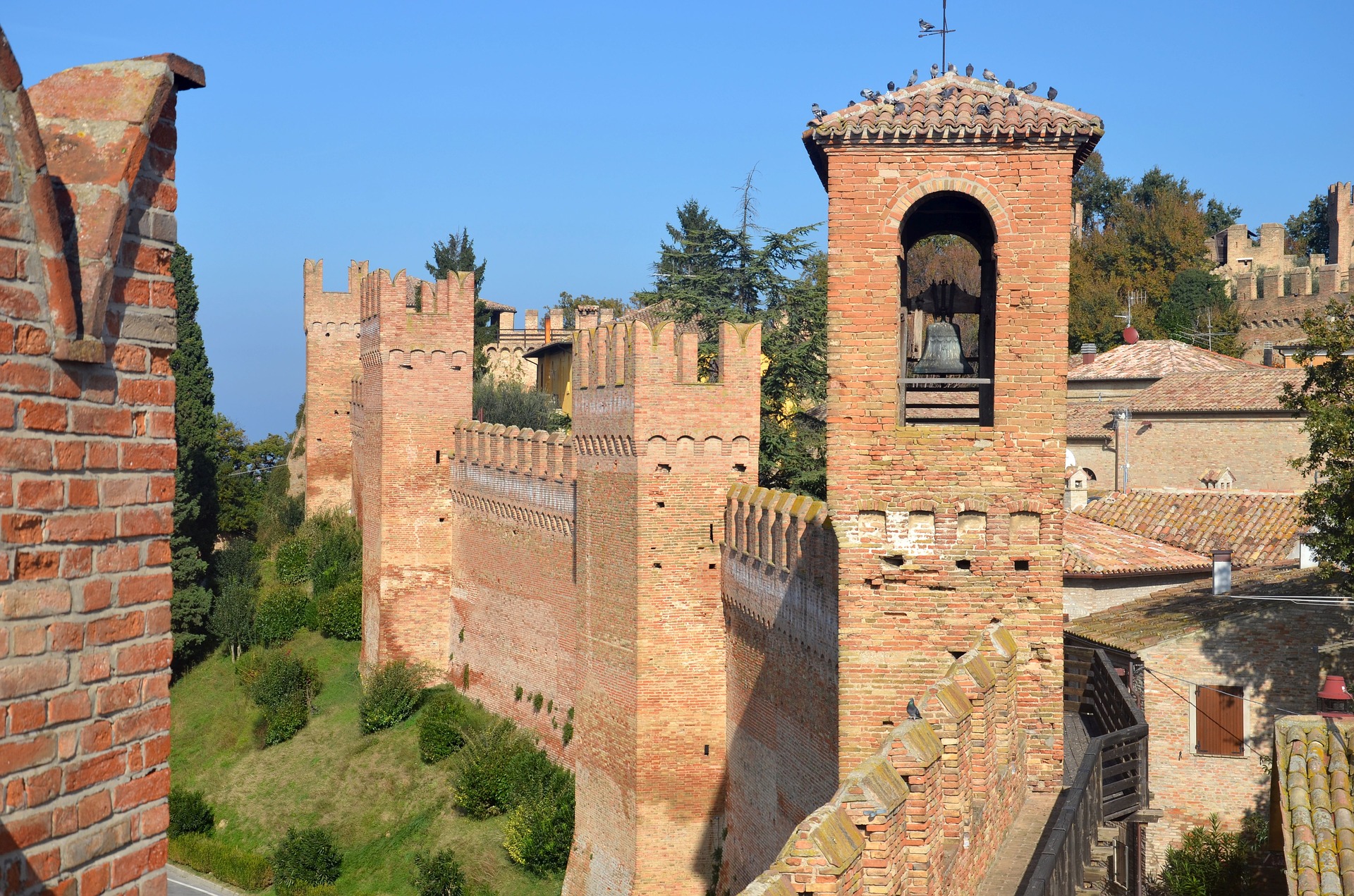
Gradara Castle is surrounded by almost 800 m of walls. The tragic story of Paolo and Francesca took place in this fortress.
The Marches is an open book of Art History.
Vittorio Sgarbi
